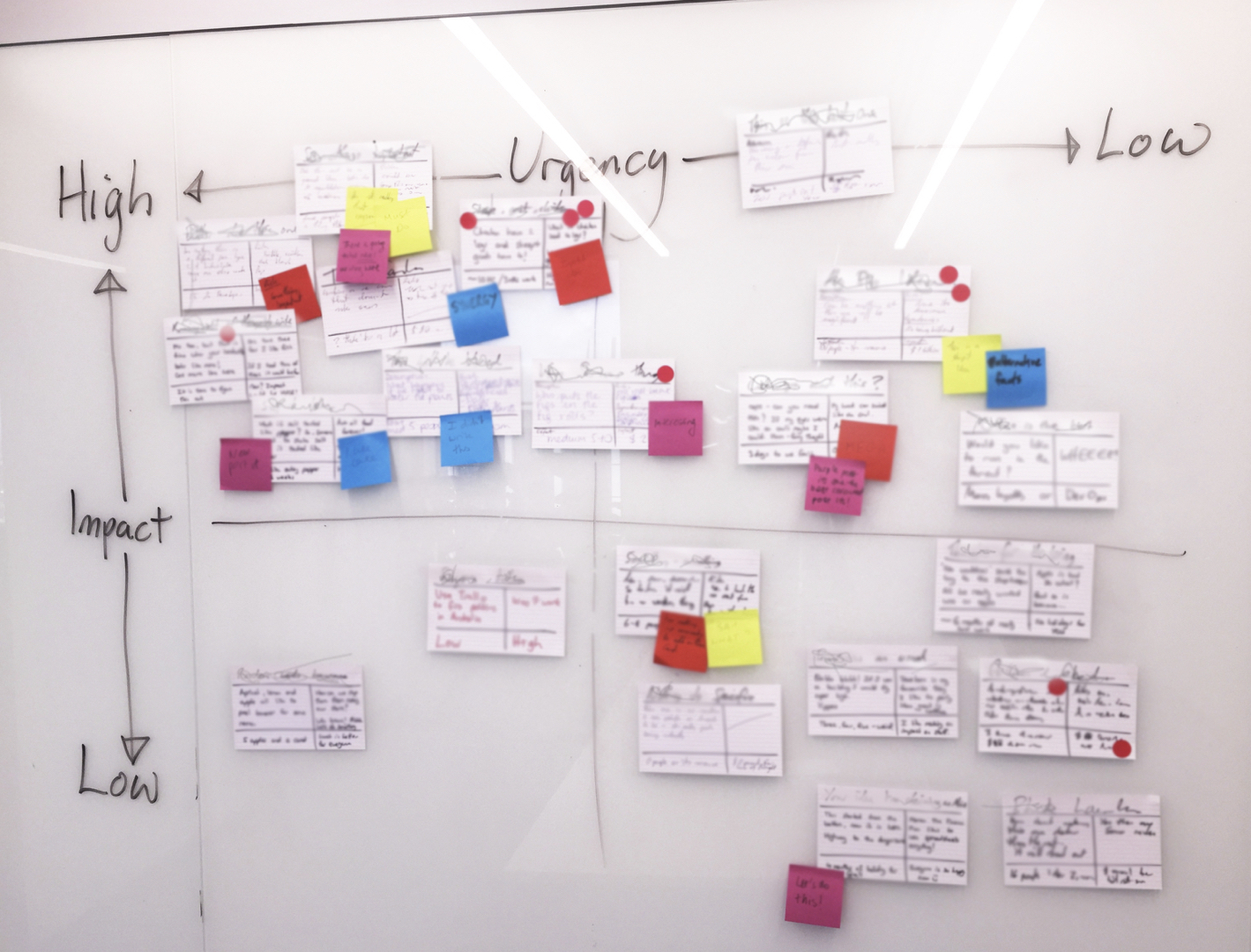Prioritization matrix for allthethings
Visualize the relative priority of your own team's projects, then compare it to work requested by other teams.
USE THIS PLAY TO...
Make quarterly and annual plans that result in the highest impact, given the resources available.
If you're struggling with or on your Health Monitor, running this play might help.

People
3 - 6

Prep Time
30 min

Time
60 min

Difficulty
Hard
Running the play
Some things simply won't get done. And that's ok, as long as you agree to tackle the mission-critical stuff first and work outward from there.
Materials
Whiteboard or butcher's paper
Markers
Sticky notes
Index cards
Prep
Prior to the session, fill out an index card for every piece of work you're prioritizing. The units of work can be on any scale (tasks, user stories, projects, initiatives, etc.), but it's a lot easier if everything is on a similar scale so you're comparing apples to apples.
Each card should describe the four factors you'll take into consideration:
- Description
- Expected outcome
- Level of effort
- Risks and dependencies

For example...
Follow this pattern for each of your index cards.
Step 1
Set the stage (5 min)
Get the group into the right mindset: even though there are multiple teams involved here, we are one company with a common purpose.
If we prioritize with this in mind, we stand a fighting chance of coming to a shared understanding of what will (and won't) help us achieve our mission. If we don't, we risk competing against each other and delaying the things that matter most.
Step 2
Set up the matrix (5 min)
Draw a 2x2 grid on a whiteboard or butcher's paper and write your teams top goals above it. Label the X-axis "Urgency", with "Sooner" on the far-left side and "Later" on the far-right side. Label the Y-axis "Impact", with "Low" at the bottom and "High" at the top.
Above the matrix, write your team's most important goal. (Or maybe top 2 goals.)
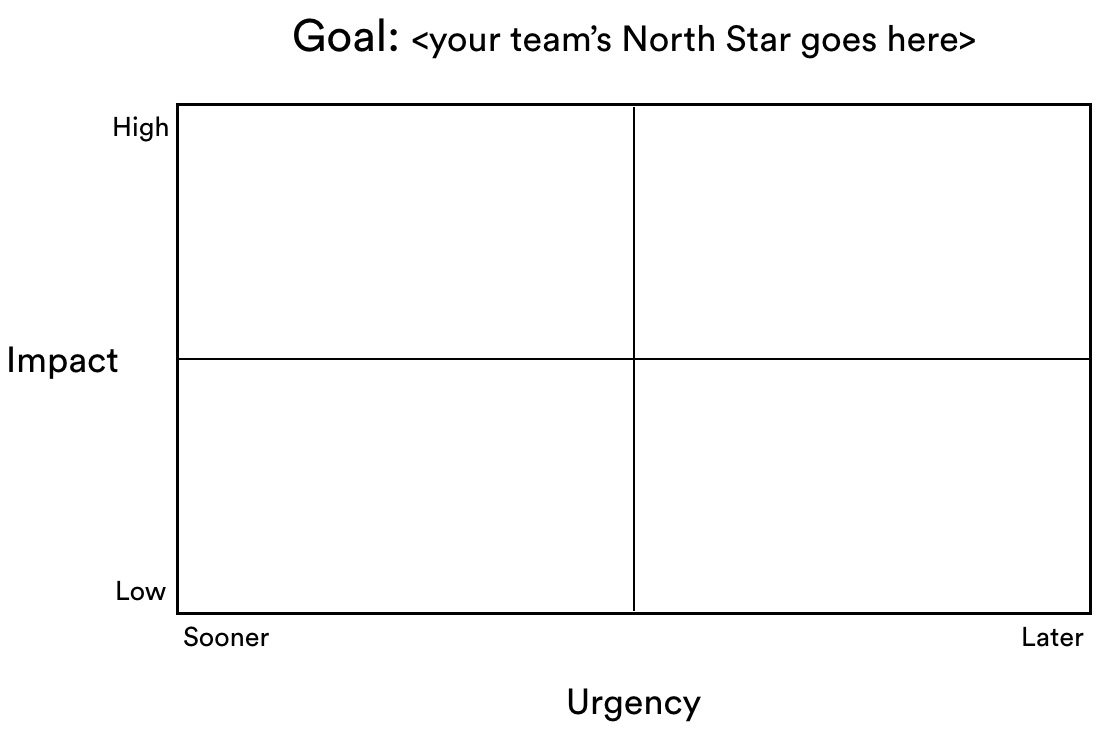

Pro Tip
Articulating your team's North Star will be much easier if you're green on "shared understanding" in your Health Monitor. Otherwise, try running the OKRs, Goals Signals and Measures, or Elevator Pitch plays before prioritizing.
Step 3
Prioritize your own team's work (20 min)
As a group, stick the cards on the board, positioning them relative to the other cards based on their impact on your goals and how soon they need to be done.
Discuss the positioning as a group and keep moving the cards until you've got an even distribution across the board. It's natural to start with everything at the top left but spreading them out is crucial.
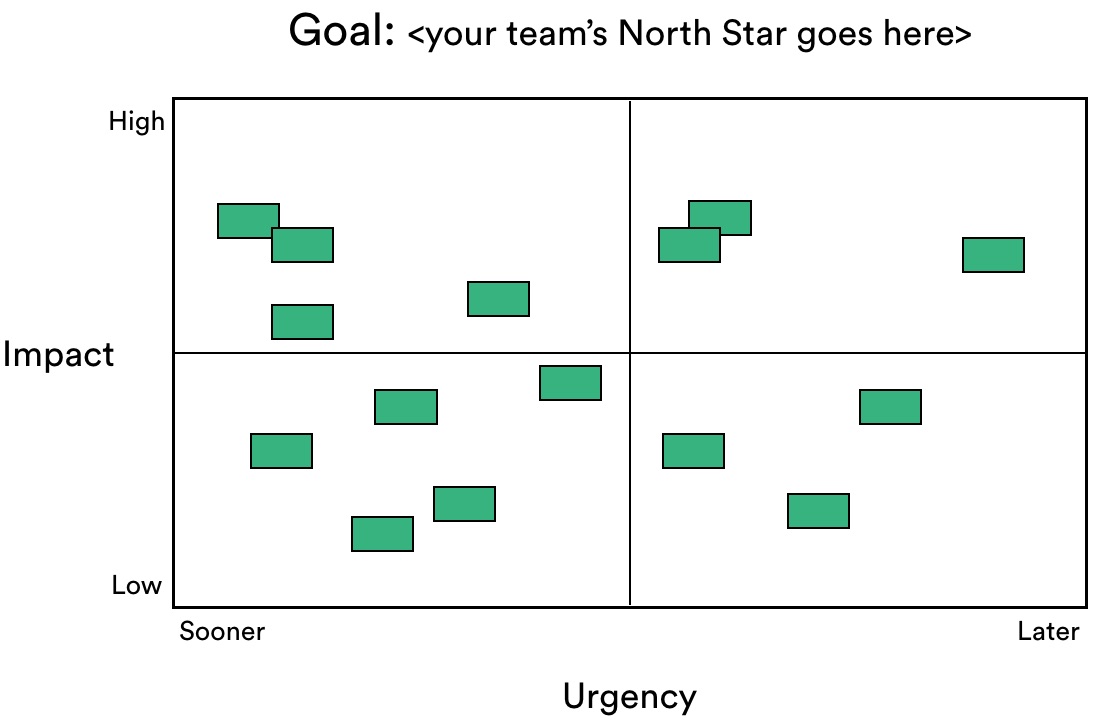
Step 4
Draw feasibility lines (10 min)
Draw 2 arcs across the board to separate the must-haves from the nice-to-haves and those you probably won't do.
Anything in the top-left is protected because it simply must be done. Nothing should be in here if it's not vital to achieving the goal.
Anything in the bottom right is likely to be pushed out. This doesn't mean it won't ever get done, just not until the more important work is complete.
Try to limit the "must-haves" to about 40% of your team's capacity, and the "nice-to-haves" to about 30%. This leaves you with some capacity to accommodate the requests you've gotten from other teams – not to mention the hot ones that might will get thrown into your path.
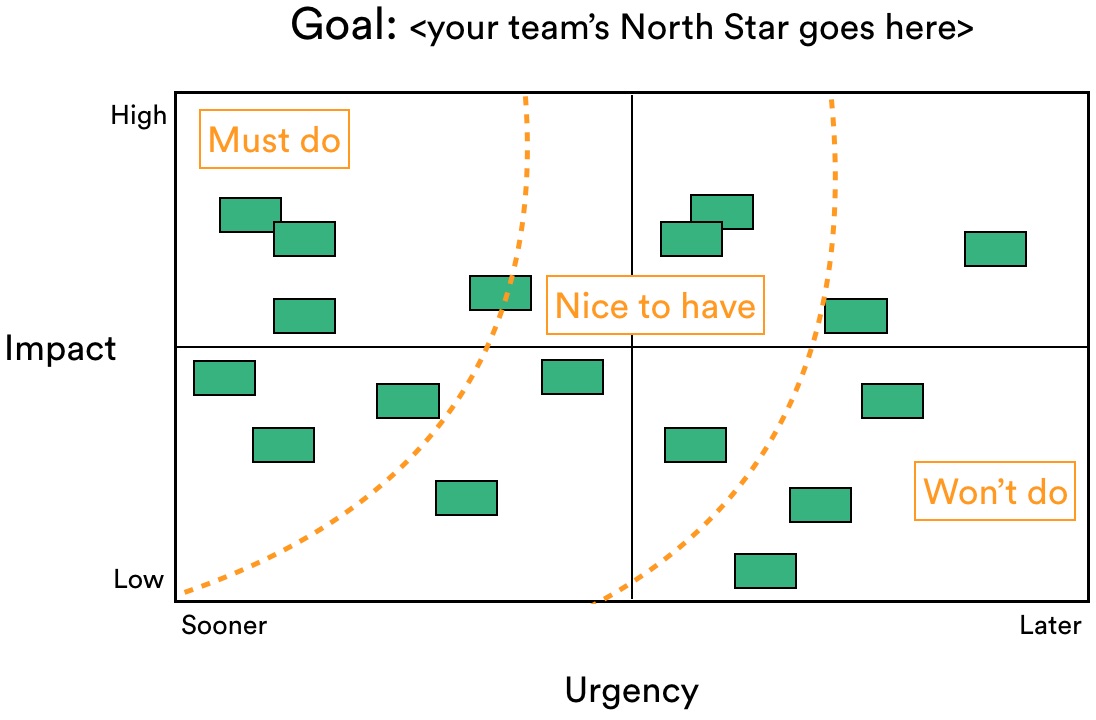

Pro Tip
Agreeing on what you're prepared to delay or simply not do can lead to some uncomfortable moments. Keeping the group laser-focused on your North Star helps take the edge off.
Step 5
Incorporate the asks (15 min)
As you prioritize other teams' requests against what's already on your plate, ask yourselves these questions:
Are the other team's goals mission-critical? (Like, at a company level?)
If you didn't accommodate the other team's request, what impact would that have on their goal?
Once you've positioned the ask(s), redraw your lines to reflect what you can now achieve. If accommodating the ask means you're putting your own goal at risk, call it out and discuss options.
If both teams' goals are mission-critical, talk to leadership about getting additional people.
If the other team's goal is mission-critical and yours is not, just do it. (doit)
If neither teams' goal is mission-critical, you'll need to look at the subtleties and reach an agreement.
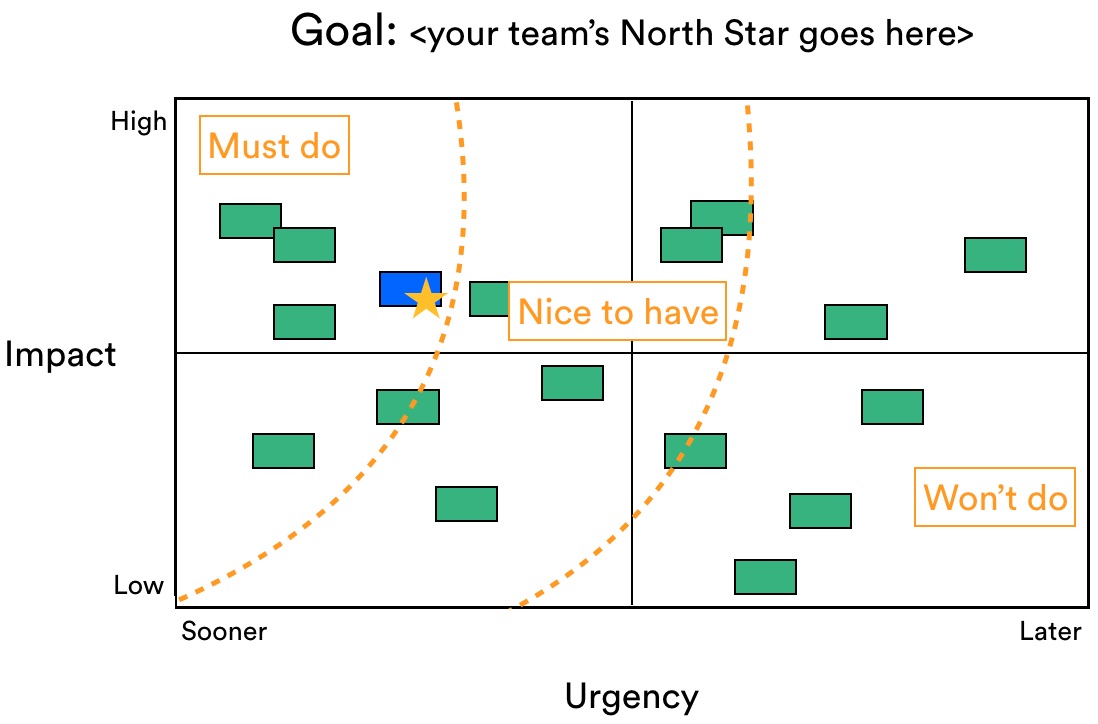

Pro Tip
Whatever the result from this exercise, make sure you communicate the decisions you've made, any resulting risks to achieving your goals and the reasons why.

For example...
Check out a priority matrix created by one of our teams.
Nailed it?
Be sure to run a full Health Monitor session or checkpoint with your team to see if you're improving.
Follow-ups
Communicate the results of this session to your full project team, stakeholders, and anyone else whose work may be affected. Highlight your reasons for drawing the lines where you did, as well as any risks that remain.
Want even more Playbook?
Drop your email below to be notified when we add new Health Monitors and plays.
Got feedback?
Drop a question or comment on the Atlassian Community site.
